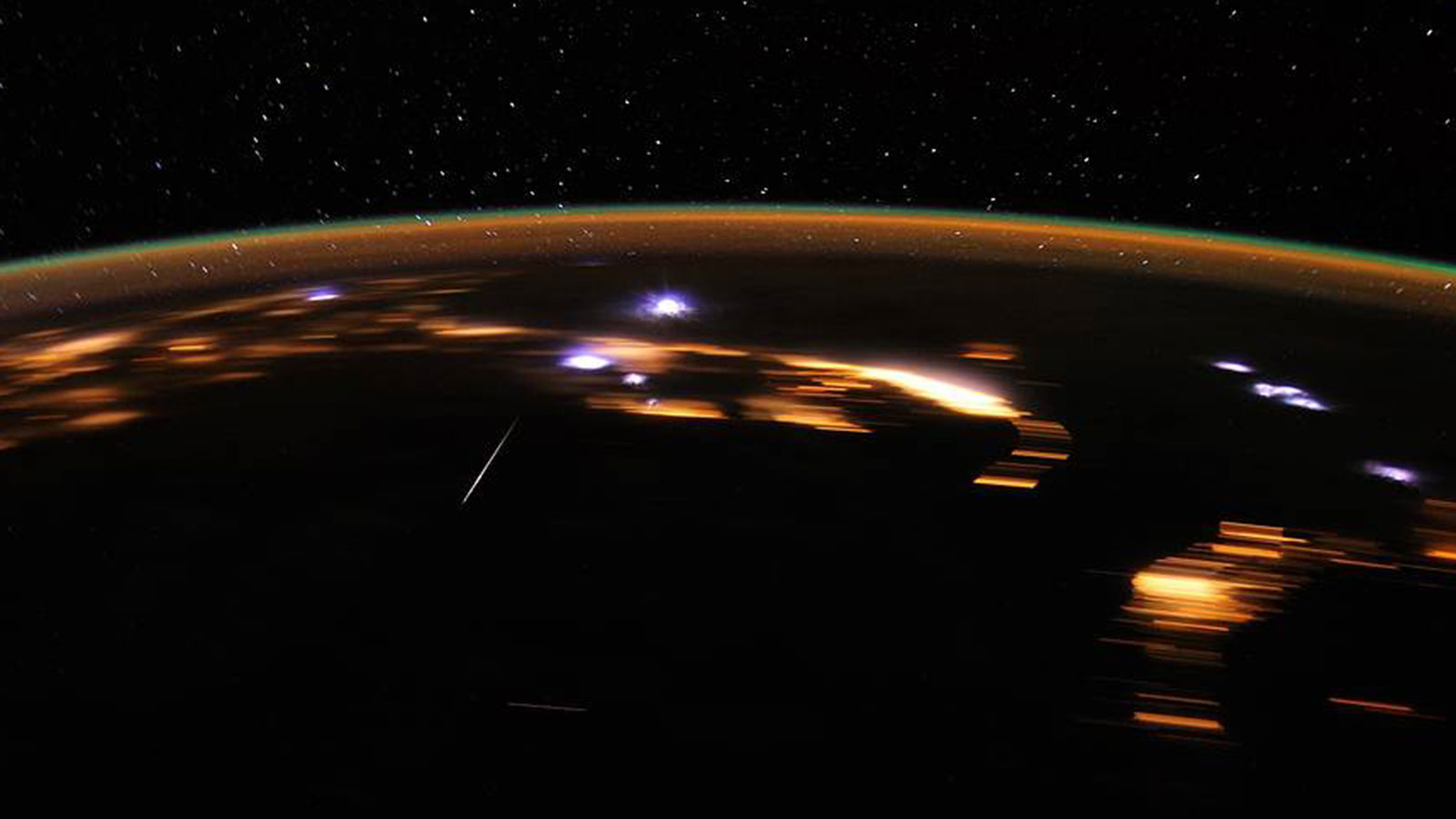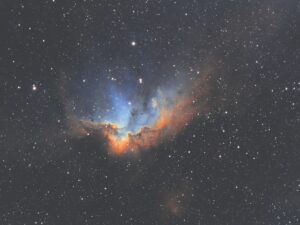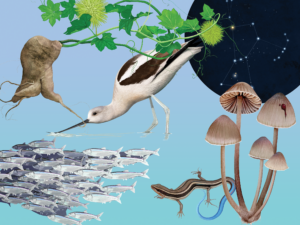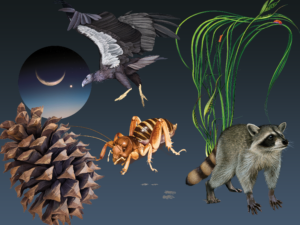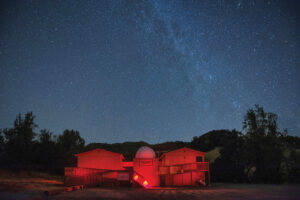The Lyrids are the first meteor shower of the year where, given the Bay Area’s cloudy winters, you have a fighting chance of seeing some shooting stars. This year, you have an extra shot because the shower, April 15-29, will coincide with the moon’s dark phase (it also overlaps with International Dark Sky Week, April 14-22).
Obe Lynd—amateur astronomer, Robert Ferguson Observatory docent, and longtime meteor connoisseur—recommends laying on a blanket after midnight and counting them with a clicker. The April event is “not the most prolific meteor shower,” says Lynd, who is giving a talk about the Lyrids on April 22. “But it’s a very interesting meteor shower.” Not least because it’s the first meteor shower recorded, seen in China in 687 BC. Expect mostly medium-speed shooting stars, with the occasional fastball or bright fireball to liven things up. “Fireballs are magnificent,” Lynd says. “They’re brighter than the brightest planet.” Sometimes, they leave a glowing trail.
Know your astro-terms
Meteoroid: A pebble, piece of dust or whatnot in space—before it hits our atmosphere.
Meteor: The flash of light we see when the meteoroid hits our atmosphere.
Meteorite: Anything left over that happens to land on Earth (a relatively rare occurrence).
“Every time we see a meteor, we have encountered something from the origin of our universe,” Lynd says. “And yet it’s only visible to us because we have an atmosphere.”
The Lyrids, like other meteor showers, are named for their radiant—the point in the sky from which they appear to originate. Theirs is in the harp constellation, Lyra (a small rhombus of stars you can find just next to the bright star Vega). Their parent comet is called CometC/1861 G1 Thatcher, named for the amateur astronomer who first saw it in April 1861. Don’t bother looking out for Thatcher, though. It won’t come our way again until about 2278.
The Lyrid meteors’ origins start at the birth of the universe itself, when the stuff of comet Thatcher was created. It starts modestly, as a dirty snowball. For a long while, it hangs out in the Oort Cloud, one in a gaggle of snowballs and junk that circle our solar system at a great distance. At some point, a passing star’s gravity jostles the snowball. Jupiter adds its gravitational influence to that of our sun. “Slowly, it starts wandering into the inside of that cloud, toward the sun,” Lynd says. Over thousands of years, the snowball falls more and more. At last, it is snared—caught by the sun’s gravity—and takes on a more defined orbit around the sun that can extend far beyond the outermost planets.
Now it is a proper comet. As it approaches the sun, it warms up and begins to thaw. Dust and gas once trapped inside is freed. The comet leaves that behind as a lightweight trail, a long diaphanous veil. There may be miles between particles. The particles themselves are tiny—20 to 300 microns across, like a dust mote you’d see floating in a sunbeam.
Each year, when the Earth and this dust cross paths, our atmosphere scoops it up. The dust screams in toward us at around 100,000 miles per hour (just medium-fast, for Earthbound meteors). But do not mistake the light it emits for a flame. That light comes from the dust’s chemical reactions with our atmosphere, in which electrons are ripped off. This produces energy—in the form of light so bright it can be seen sixty miles down, on the ground, and by people in far-off cities at the same time. “It’s a testament to the power of atomic energy,” Lynd says.

Showers to see
Lyrids (April; expected peak April 22) The oldest recorded meteor showers known. The Lyrids get frisky with an outburst every century or so, with a hundred or so meteors per hour; the last one was 1982. On a regular year it’s more like 18 per hour.
Perseids (August) The people’s favorite, being very prolific (up to 100 meteors per hour). Meteors travel about 133,000 miles per hour.
Taurids (September-December) Your slow and stately meteors, traveling just over 60,000 miles per hour. Notable for smoke trails, and fireballs or bolides, which are extra-bright meteors that explode, sometimes with a sonic boom.
Leonids (November) Zippy meteors, traveling nearly 160,000 miles per hour.
People have long noticed comets and their meteor showers, but it took centuries to suss out what they really were, and that they were connected. Lynd has worked to trace the path of the many scientific advances that laid the foundation, layer by layer: Copernicus’s proof that the Earth moved around the sun, Galileo’s telescope that opened up the night sky, Kepler working out the motion of celestial bodies. Among these, some lucky astronomical events spurred discoveries.
One of note was the Great Meteor Storm of 1833. That year, the Leonids meteor storm was so intense that “people were diving under the pews in droves, because they thought it was the end of the world,” Lynd says. There were thousands per hour—hard to miss. Denison Olmsted, a Yale professor, got newspapers to help him ask for observations from all over the country. Some people noticed they could trace the path of each meteor back to a single point in the sky, which progressed throughout the evening but did not change with respect to the backdrop of the stars. That helped him work out that the meteor shower was happening outside Earth’s atmosphere. Far from being “dry exhalations” of Earth, as Aristotle had thought, shooting stars were a cosmic event.
From there, “the story gets wiggly, and ironic,” Lynd says: not everyone accepted Olmsted’s conclusion about meteors. One astronomer said sarcastically that if Olmsted was right, “we may as well say meteors are splinters from the tail of a comet!” Lynd notes.
“Which, of course,” Lynd says, “turned out to be true.”
Lyrids in focus Obe Lynd is giving a “Focus Night” talk about the Lyrids April 22 at the Robert Ferguson Observatory, in Sonoma County. Tickets $40-50, advance registration required.

